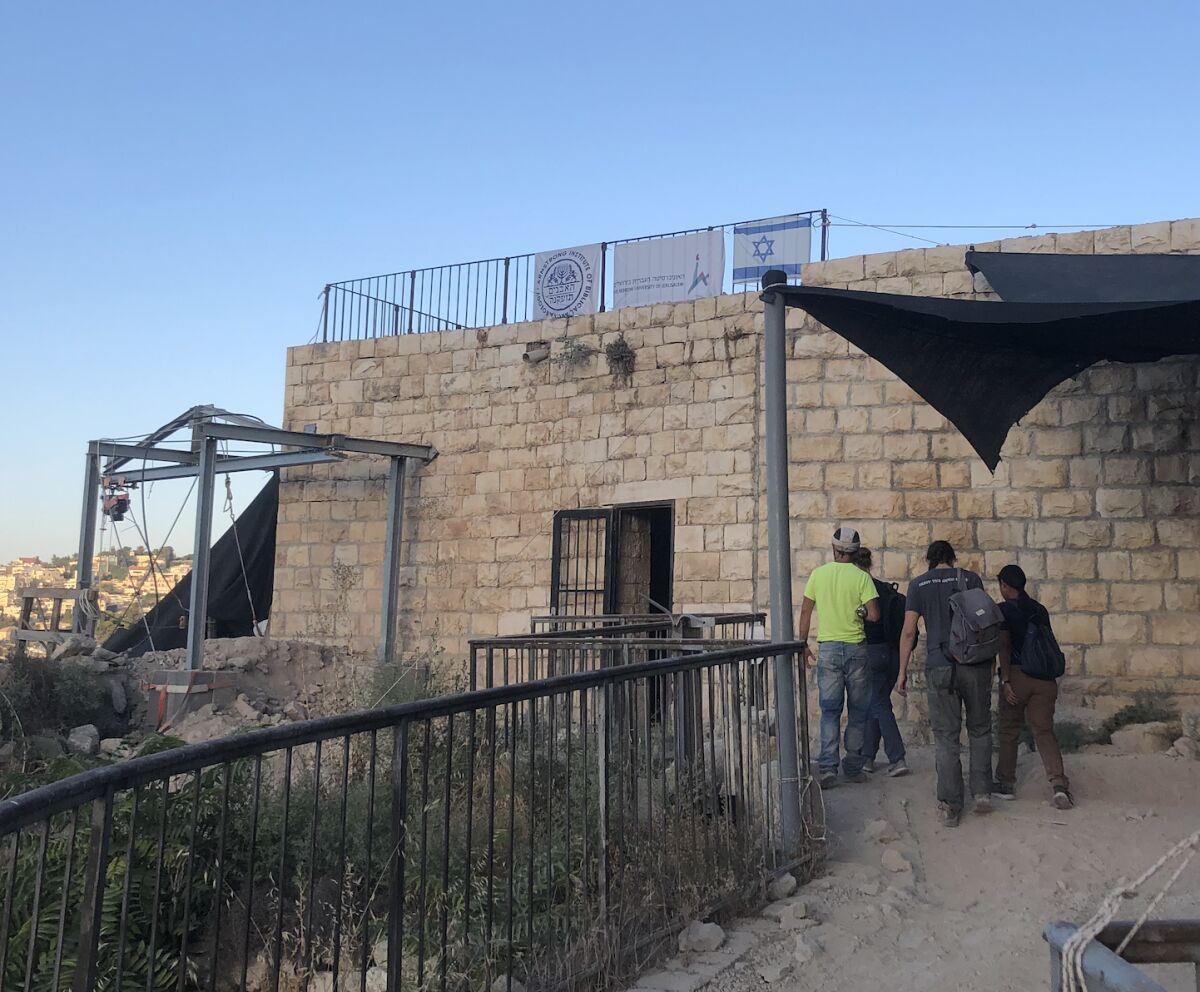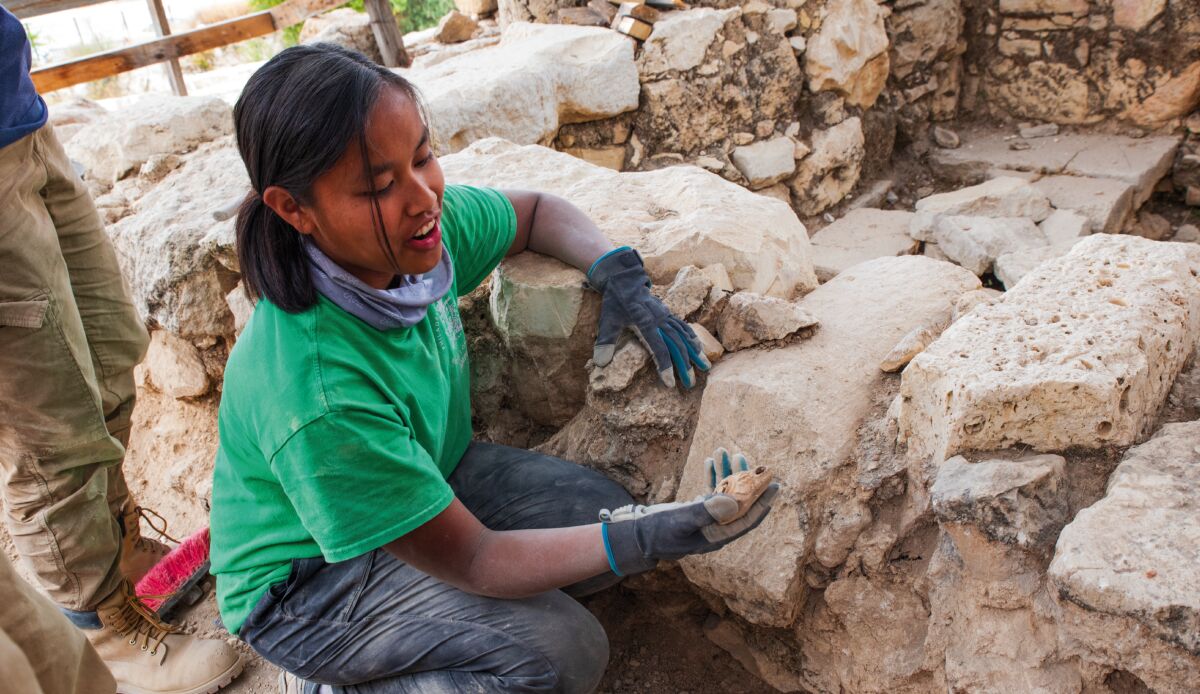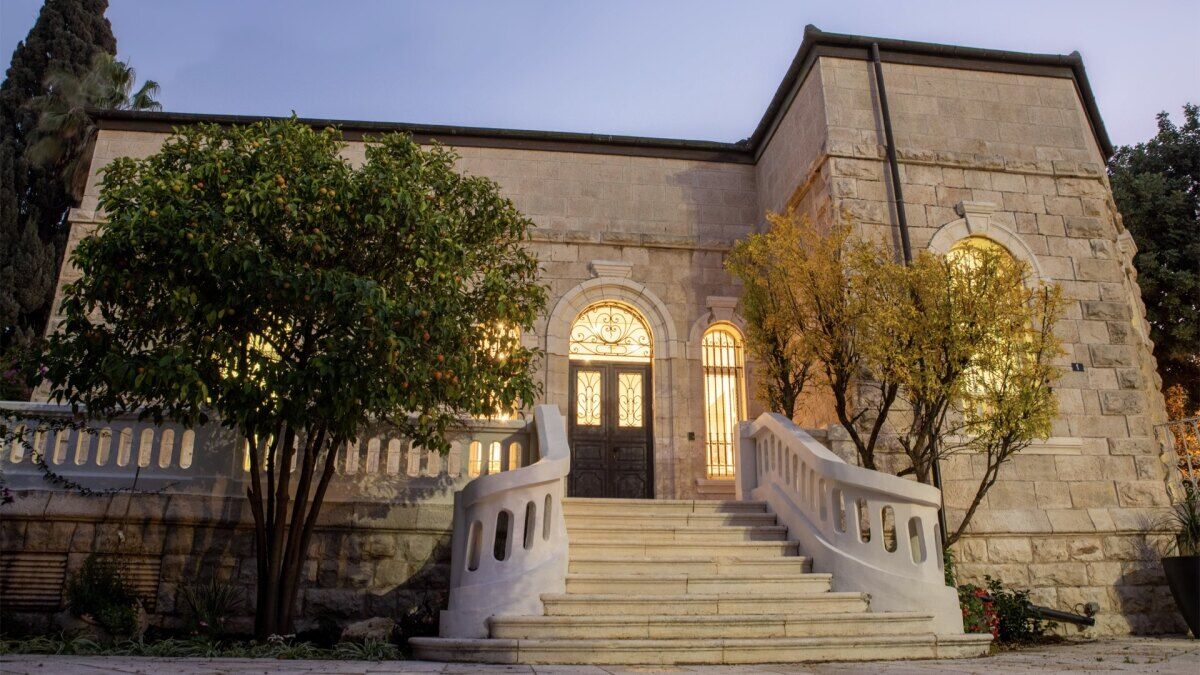A Day on the Dig
My day begins early, really early. This is because summer in Jerusalem is hot. The average temperature is normally in the mid-30 degrees Celsius (low 90 degrees Fahrenheit). To beat the heat, most archaeological excavations in Israel start early in the morning and end early afternoon. For the diggers on the Ophel excavation, our workday begins at 6:30 a.m. and ends at 2 p.m. This means leaving home by 6 a.m.
The walk from the Armstrong Institute of Biblical Archaeology to the Ophel is about 30 minutes, and it’s beautiful. The sun is rising and early morning light shines through Jerusalem’s streets. The morning air is crisp, and you can hear the sounds of a city waking up. Jerusalem is mountainous and there are so many sites to see: the city’s stone architecture, fruit trees and flowers line the sidewalks, and stray cats dart in and out of the bushes (Jerusalem has a lot of stray cats).
Occasionally we drive to the dig, allowing for a slightly later departure (and a little more sleep). On those days, Let the Stones Speak assistant managing editor Brent Nagtegaal stops by the institute at 6:15 a.m. with a nine-passenger van. Jerusalem’s roads are narrow, packed with cars, and marked by bumps and potholes. Add to the experience the fact that most drivers are impatient and aggressive, and a drive through Jerusalem is quite the adventure.
There are numerous close calls, drivers cutting off the van, and motorcyclists squeezing in gaps barely large enough for them. And there’s the endless cacophony of horn honking. Stop for a split second and the driver behind you will soon express disapproval with his horn. Fail to move quickly enough, and he will blow past, even if it means taking the sidewalk.
At the dig site, we’re greeted by the other volunteers with a chorus of “Boker tov” (Hebrew for “Good morning”). This season there are over 50 people working on site each day. Our crew is composed of students and faculty from Herbert W. Armstrong College, New York’s Yeshiva University, and Hebrew University, as well as some other local volunteers and a handful of full-time staff members.
There is a lot to take in when you enter the Ophel site. When you pass through the metal gate and walk up the stairs, you’re face to face with the giant southern wall of the Temple Mount, with the gray dome of al-Aqsa Mosque peeking over top. Standing on the path and looking east over the treacherously deep Kidron Valley, you see the Mount of Olives. Look south and you see the City of David, buttressed by the impressive Stepped Stone Structure. Look due west and you see the Dung Gate entrance into the Old City and a line of tourists entering the Western Wall Plaza. Working here is an extraordinary experience. Is there another place on Earth with such an iconic vista in every direction?

Walking the short distance from the top of the stairs to the Byzantine building we use as the dig office, we cross over an iron bridge and pass by the wet-sifting station. We begin the day by filling the water jugs with cool water, prepping the pottery station, and grabbing stacks of empty buckets for the day’s excavations. Then we grab our tools: a small pickax, hand shovel, brush and bucket. With our supplies in hand, we head to our respective areas.

The majority of the Armstrong crew goes to either Area D or Area D1. Area D works under supervisor Amir Cohen-Klonymous, and Area D1 is supervised by Christopher Eames. A handful occasionally assist in Area E or Area F.
Digging begins at 6:30 a.m. sharp. By this time, Amir is already on site working; he typically begins his day by taking measurements of each of the loci (each area is divided into sections, or loci). He’s often joined by dig photographer Aubrey Mercado, who snaps some photos to document where the day began. Aubs is a busy gal. Every new discovery and every new layer of material must be photographed and documented, which means Aubrey spends a lot of time each day bouncing back and forth between the four areas.
The elevation of each locus is documented at the start of each day. Amir does this using an optical level and with the help of a volunteer brandishing a long measuring device (called a “lata”). A few minutes later, and a few numbers in Hebrew, the final documentation is complete and we’re ready to excavate.
Generally, most diggers remain in the locus they were assigned on the first day. The locus quickly becomes your safe space, your pride and joy. You get to know the soil, rocks and other material. The more familiar you are with the locus, the easier it is to tell when there’s a change in strata or something is out of place, or maybe a wall is coming into focus. In Area D, where I’m digging, we’re excavating Byzantine material from the fourth to seventh century (324–638 c.e.).

Each locus is shaped like a rectangular room or hallway-like section amongst large stone walls. As the excavation goes on, we clear off layer after layer of Byzantine dirt and material. Our goal is to understand the Byzantine structure better, to learn what the rooms were used for and, as we progress deeper, to reach the next level of stratum.
While Amir gives us instructions (which always include some jokes), his assistant, Akiva, labels tags for our pottery buckets. Each locus is assigned a locus number, which is attached to the bucket that will hold soil dug from that locus. This way we know exactly where every bucket of soil originated. Akiva brings life to Area D with his singing and cheerfulness.
In my locus, the finds come thick and fast. It’s usually pottery, including broken pieces of jugs, jars, bowls and others such items. The best pottery finds are intact pieces, rims, handles or even painted pottery (called a “slip” in archaeological terminology). However, it is also common to find a lot of glass shards and maybe a few animal bones. As you dig, it’s important to pay attention to detail and keep a careful eye out for anything unusual in the soil. Everything is a potential clue that could help explain the strata of soil, what the area was used for, and why that specific material is there.

On our dig, the discovery of coins elicits the most excitement. Ancient coins are a porthole into the ancient culture. A coin is usually associated with fixed dates, which gives the general time period. And there are often other meaningful symbols and iconography. To help find coins, Armstrong student Christopher Stiles visits our loci with his metal detector.
While the coins can be hard to spot—they’re usually tiny and caked in dirt—a few eagle-eyed volunteers are able to spot a few coins on their own without the use of a metal detector. Earlier in the dig, Armstrong alumnus Emma Moore even spotted a coin at the top of a bucket of dirt that was just about to be lugged off to the dump pile.

One of the most fun parts of the day are when we do a bucket line, or sharsharet. When our loci become crowded with full buckets of dirt, or if we run out of empty buckets, we line up and work together to pass the full buckets to where they are dumped into a lift, which is then hoisted up by a crane over the large Muslim-period wall that borders Area D. The loose soil is then dumped into a large pile to be taken by the tractor and hauled out of the Ophel. As we swing the heavy buckets down the line, we sing songs, make jokes, and chat about the day. The sharsharet is hard work, but with everyone working together, it is the most effective way to move the buckets and clean up the area.
After the sharsharet, we get back to work at our loci. Depending on your locus, this can involve a myriad of different tasks. Some loci are filled with boulders that require large pickaxes to remove and hammers to break them. Some loci have lots of broken pottery shards that need to be brushed off and left in situ so a photo can be taken. Then there are some that simply need to be brushed and cleaned for a photo because a new layer has been found.

At 9:00 a.m., we take our first break, or hafsakah. All the volunteers from every area meet under a shaded picnic place with tables. During this break, we eat breakfast together. Our excavation logistics manager, Yadidya, always has a surprise for us at breakfast. Sometimes it is delicious shakshuka, or maybe even pancakes. After a half hour, we get back to work.
At 12:00 p.m., we have another short hafsakah. On this break, Yadidya provides us with watermelon, dates, coffee and crackers. It’s also time for show-and-tell! This is when excavation codirectors Prof. Uzi Leibner and Dr. Orit Peleg-Barkat present recent discoveries and explain their meaning and significance. It is a nice quick rest before heading back to work.
https://www.youtube.com/watch?v=A6QL6iT1HFU
After lunch, it’s time to think about wrapping up for the day. We might finish a little more digging and try to level out our loci. There’s usually another sharsharet or two. We also take a few final measurements. Amir and Akiva finish up paperwork and logging the day’s finds.
At 2:00 p.m., work at the site is finished, and we get ready to go home. All buckets and tools are put away; the pottery buckets are taken to the pottery washing station, where the pottery will be cleaned and sorted for future examination.

After cleaning up and putting everything away, we say goodbye to the other volunteers and begin heading back to the Armstrong Institute of Biblical Archaeology building. When we get back to the institute, we all work a few more hours. Some of us work on maintenance and house painting. Others do custodial, kitchen and library office work. Some work on art, writing and editing for our publications.
Our day ends with a family-style dinner. We all sit around the table telling stories about the day and talking about any discoveries we made. After we finish eating, everyone pitches in to help clean up and do the dishes. Then we all start to wind down and get ready for bed so that we can get a good night’s rest and wake early to do it all again the next day!